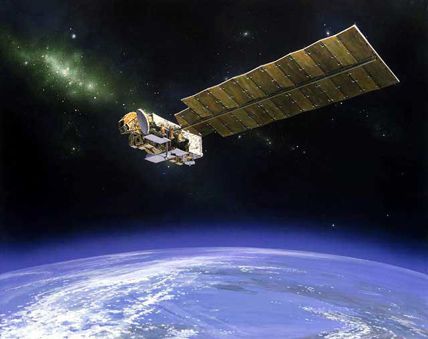|
|
|

Skeptic Summary #314
By The Staff
Posted on: 1/9/2011
|
Armageddon, helping the self, belief labels, ID, the JPL and more!
|
Week ending January 08, 2011 (Vol 8, #2)
Welcome to the Skeptic Summary, a quick week-in-review guide to the Skeptic Friends Network and the rest of the skeptical world.

Forum Highlights:Armaggedon date has been moved ahead! - The latest revision of the date when the world ends.
Just what the world needs… - Another self-helping guide book.
Labeling our beliefs - Are you atheist, agnostic, secular humanist or skeptic?
Editor’s Choice: Intelligent Design is stupid - JerryB showed off his ignorance of algebra.

Kil’s Evil Pick:Jet Propulsion Laboratory Website — From the Director:“Do not go where the path may lead,” wrote Ralph Waldo Emerson. “Go instead where there is no path, and leave a trail.” That could be the motto of the Jet Propulsion Laboratory. Trailblazing has been the business of JPL since it was established by the California Institute of Technology in the 1930s. America’s first satellite, Explorer 1 which launched in 1958, was created at JPL. In the decades that followed, we sent the first robotic craft to the moon and out across the solar system, reconnoitering all of the planets. Pushing the outer edge of exploration, in fact, is the reason JPL exists as a NASA laboratory.
In that spirit, this is an exceptionally busy period for JPL in laying new paths. In November, the Deep Impact spacecraft made a close flyby of a small, peanut-shaped comet, one of only a handful ever visited. In February, our Stardust spacecraft will fly by yet another comet. The asteroid belt will be the destination in July when the Dawn spacecraft arrives at the protoplanet Vesta, which it will orbit for a year before continuing on to the dwarf planet Ceres. In 2011 we will also launch four new missions — the Earth-orbiting Aquarius, Jupiter-bound Juno, GRAIL to Earth’s moon and our next flagship rover mission, Mars Science Laboratory.
They will join our many current missions arrayed across the solar system. At the Red Planet, Mars Reconnaissance Orbiter is returning exceptionally detailed photos of the surface, while the Mars Exploration Rover mission keeps going far beyond original plans. The flagship explorer Cassini continues its orbits of Saturn, scrutinizing the ringed planet and its moons, including the haze-shrouded Titan in an extended mission. The Voyagers are exploring the edge of our solar system. A cadre of spaceborne telescopes look out beyond the planets to stars and galaxies beyond — among them the Spitzer Space Telescope, Wide-field Infrared Survey Explorer, Galaxy Evolution Explorer, and the European-teamed Herschel and Planck missions.
Closer to home, a contingent of Earth-orbiting satellites monitors the lands, oceans and atmosphere of our own planet, returning important information on topics ranging from atmospheric ozone to El Nino events. These include the Jason 2 satellite launched on a joint U.S./French mission to monitor Earth’s oceans.
In total, JPL has 20 spacecraft and nine instruments conducting active missions. All of these are important parts of NASA’s program of exploration of Earth, the solar system and the universe beyond. These ventures would not be possible without NASA’s Deep Space Network managed by JPL. This international network of antenna complexes on several continents serves as the communication gateway between distant spacecraft and the Earth-based teams that guide them. While carrying out these exploration missions, JPL also conducts a number of space technology demonstrations in support of national security and develops technologies for uses on Earth in fields from public safety to medicine, capitalizing on NASA’s investment in space technology. 
The Jet Propulsion Laboratory website contains so much information, I really don’t know where to begin. The main menu includes a section for News, Missions, Multimedia (so far my favorite section) Kids, Education, Public Events, Work at JPL and About JPL. And all of those sections are broken down into subsections. There are fantastic photos, games, information pages on projects like the ongoing Cassini spacecraft, past missions, current missions, missions in the planning stages and much more. The section on climate change alone is vast and informative. You can get lost for hours, or maybe days on this site. And it’s updated regularly with new videos each month and new information about the earth and the cosmos, as it becomes available.
I love this pick and I think you will too.
SkeptiQuote:All that belongs to human understanding, in this deep ignorance and obscurity, is to be skeptical, or at least cautious; and not to admit of any hypothesis, whatsoever; much less, of any which is supported by no appearance of probability. — David Hume |

Chat Highlights:Wednesday: There was no chat last week due to scheduling problems. Chat will be at its regular time next Wednesday. Thanks!
Come chat with us. 
New Members This Week:Dana
Shiki
lorenzalizares
LMorford
Mick West
(Not a member? Become one today!)

Elsewhere in the World:10-year-old Canadian girl discovers a supernova
Billboard Wars
“The bones aren’t there”: Philosopher of religion hangs it up
Do 600 unwanted pregnancies really make an exceptional story?
Fear of Flying
House Republicans Appoint Climate Change Deniers to Committee Chairs
Illogical “Phallusies” — Viewing Scientific Research Through Penis Colored Glasses
Inroads for the ark park?
It wasn’t just shoddy, it was fraud
Psychic Predictions, Past and Future
Telescope Calibration May Help Explain Mystery of Universe’s Expansion
What’s New by Bob Park
When did humans first wear clothes?
Why are all the birds dying?
Why do women cry? Obviously, it’s so they don’t get laid.
Got some skeptic news items? Send them to us, and we’ll think about adding them.

Book of the Week:Just How Stupid Are We? Facing the Truth About the American Voter, by Rick Shenkman.

“Levees break in New Orleans. Iraq descends into chaos. The housing market teeters on the brink of collapse. Americans of all political stripes are heading into the 2008 election with the sense that something has gone terribly wrong with American politics. But what exactly? Democrats blame Republicans and Republicans blame Democrats. Greedy corporate executives, rogue journalists, faulty voting machines, irresponsible defense contractors — we blame them, too. The only thing everyone seems to agree on, in fact, is that the American people are entirely blameless. In Just How Stupid Are We?, best-selling historian and renowned myth-buster Rick Shenkman takes aim at our great national piety: the wisdom of the American people. The hard truth is that American democracy is more direct than ever — but voters are misusing, abusing, and abdicating their political power. Americans are paying less and less attention to politics at a time when they need to pay much more: Television has dumbed politics down to the basest possible level, while the real workings of politics have become vastly more complicated. Shenkman offers concrete proposals for reforming our institutions — the government, the media, civic organizations, political parties — to make them work better for the American people. But first, Shenkman argues, we must reform ourselves.”
— Book Description

This Week’s Most-Viewed Pages:Forum Topics:- Intelligent Design is stupid
- Devonian Bunny fossil verified
- The Supper
- Funny FAILS
- Moon-walker claims alien contact cover-up
- Alms for the poor…
- Archaeological mysteries
- PZ expelled from Expelled — Dawkins slips in!
- Scattershots: gargoyles & grotesques
- Alan Grayson to Chris Matthews on the swine Cheney
Articles:- Fundamentalists Hate Noah’s Ark
- Evolving a Venom or Two
- Miracle Thaw — The Bogus Miracle
- Scientific Truth
- The Bible’s Bad Fruits
- TAM5
- Calorad
- Come & Receive your Miracle: A Sunday Afternoon at a Robert Tilton Crusade
- Miracle Thaw Tray
- Is the Speed of Light Slowing Down?
There were 6,494 daily visitors this week.
More issues of the Skeptic Summary can be found in our archive.
The Skeptic Summary is produced by the staff of the Skeptic Friends Network, copyright 2008, all rights reserved.
Read or Add Comments about the Skeptic Summary
|
|
|
Back to Skeptic Summary
|
![]()